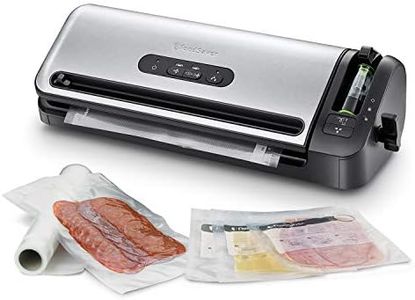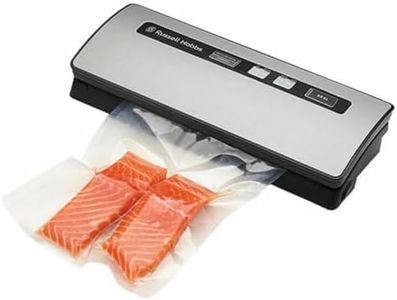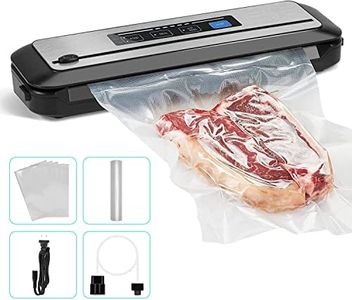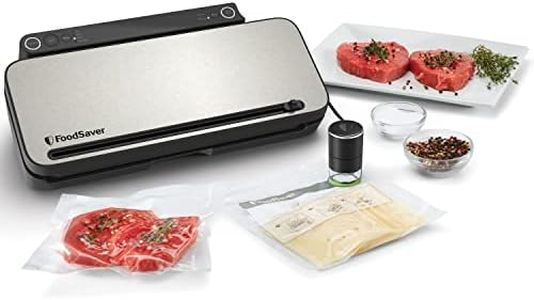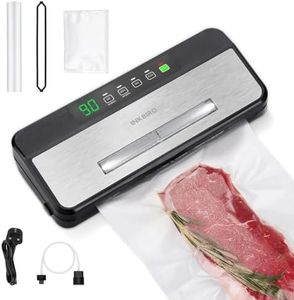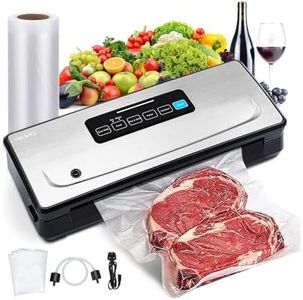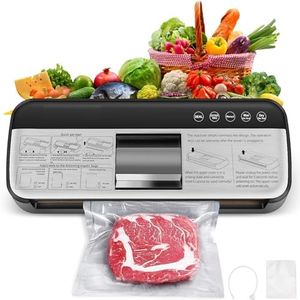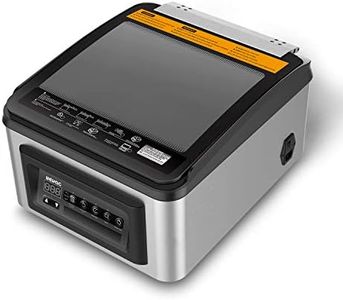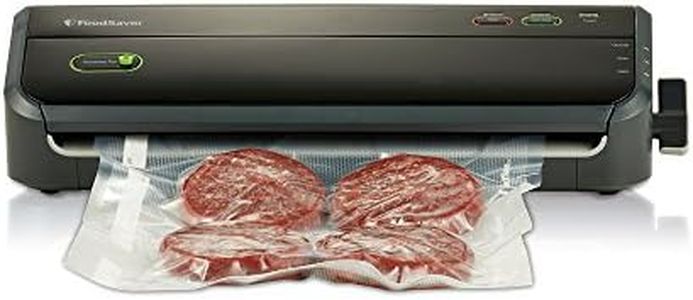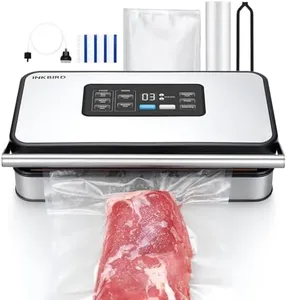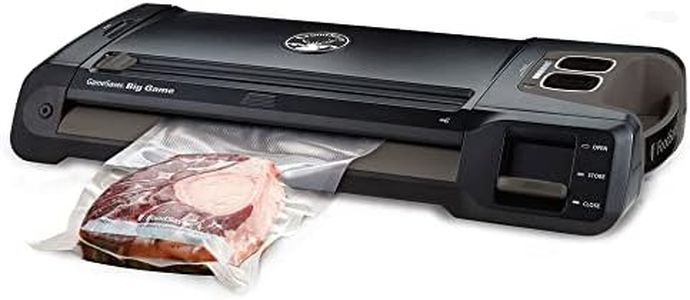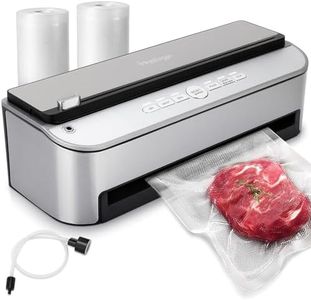We Use CookiesWe use cookies to enhance the security, performance,
functionality and for analytical and promotional activities. By continuing to browse this site you
are agreeing to our privacy policy
10 Best Vacuum Sealer Machine
From leading brands and best sellers available on the web.Buying Guide for the Best Vacuum Sealer Machine
Choosing a vacuum sealer machine can make food storage easier, help prevent waste, and preserve food for longer. The right vacuum sealer ensures a tight seal for freshness and is convenient to use for the types of food and storage needs you have. When shopping for a vacuum sealer, paying attention to a few key specifications will help you pick a product that fits your lifestyle and expectations.Sealing Type (External vs. Chamber)The sealing type describes how the vacuum sealer removes air and seals the bags. External (or suction) sealers are compact, affordable, and suitable for most home use, especially for sealing solid foods. Chamber vacuum sealers, usually larger and pricier, remove air from both the bag and the chamber, making them better for sealing liquids or very moist food. If you mainly seal dry or solid foods, an external model is fine. If you want to store soups, stews, or marinated meats, a chamber model is a better fit.
Seal WidthSeal width refers to how wide the sealing strip is—the area on the bag where it melts and fuses the plastic. Wider seals are stronger and help prevent leaks, especially for moist foods. Standard home machines often have seal widths around 2-3 mm, while more robust models might have 5 mm or more. If you plan to seal heavy or juicy items, or want extra reassurance against leaks, look for a wider seal. For everyday dry foods, a standard width is usually enough.
Vacuum Strength (Measured in Inches of Mercury or kPa)Vacuum strength shows how effectively the machine removes air from the bag. The value can be in inches of mercury (Hg) or kilopascals (kPa). Higher values mean more air is removed, which can extend storage life. Typical machines range from 15-30 inches Hg; stronger vacuums pull closer to 28-30 inches. If you're sealing delicate, soft foods, too much strength can crush them—look for adjustable modes. If you want maximized air removal for long-term storage, a higher value is an advantage.
Bag/ Roll CompatibilityNot all vacuum sealers work with all types or sizes of bags and rolls. Some are compatible only with pre-cut bags, while others work with customizable rolls, letting you pick the bag size. Some accept third-party or generic bags, while others may require their brand's bags. Consider what types of food, portions, and storage you need. If you want flexibility for different bag lengths or cheaper options, look for roll compatibility and support for standard-size bags.
Operation Modes (Manual/Automatic/Pulse)These modes affect how you control the vacuum and sealing process. Automatic models let you start the process with a single button press, which is easy and hands-off. Manual or pulse modes allow more control, letting you stop the vacuum to prevent crushing delicate items like berries or baked goods. If you plan to store a variety of foods, especially fragile ones, having both automatic and manual modes increases versatility. For only dry, sturdy items, automatic should be sufficient.
Ease of CleaningVacuum sealing can get messy, especially with juicy foods. Machines with removable drip trays or easy-to-clean surfaces are more convenient to maintain. Some have dishwasher-safe parts, while others might require more effort to keep clean. If you’ll use the sealer frequently or with moist items, choose a model with design features that make cleaning easier.
Size and StorageVacuum sealers range from compact handheld models to larger countertop machines. Size impacts where you can store it and how much space you have for sealing larger bags. If you have limited kitchen space, a compact design that’s easy to put away is valuable. If you expect to seal large batches or bulk items, a bigger machine might be more practical, but ensure you have space for it.
